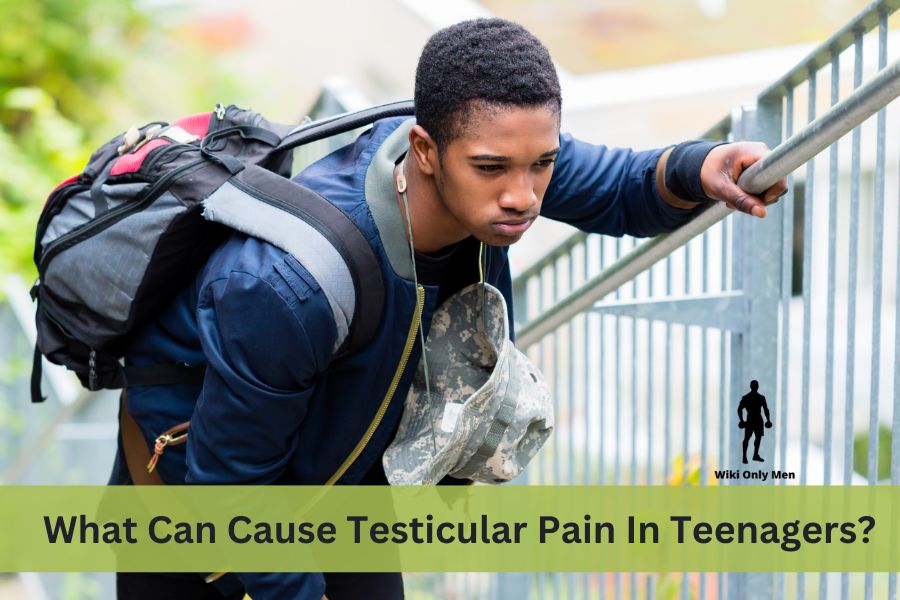Teens may feel a sharp ache in the scrotum or testicle when they have testicular pain. The discomfort can be temporary (acute), lasting up to three months, or linger for a while (chronic). It could affect either testicle. Teenage boys may experience testicular pain and discomfort for a variety of causes.
What Can Cause Testicular Pain In Teenagers?
Epididymitis, testicular torsion, and testicular appendix torsion are the most prevalent causes of acute scrotal pain in children and adolescents. Reviewing the medical records of 238 consecutive boys aged 0-19 who arrived with acute scrotal pain at a hospital over two years revealed that 16% had testicular torsion, 46% had torsion of the appendix testis, and 35% had epididymitis.
Testicular Torsion
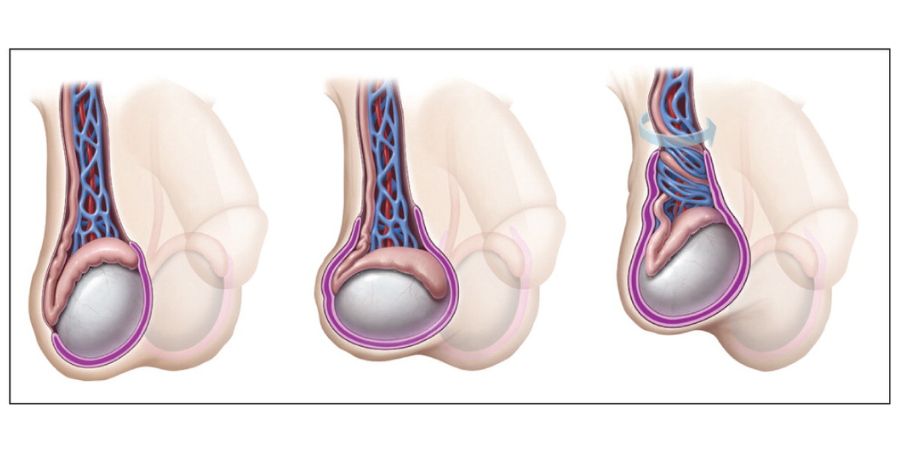
When a guy is an adolescent or a teenager, testicular torsion can cause sudden, excruciating pain in the testicles or scrotum.
Sometimes, it may be embarrassing or uncomfortable for adolescent boys to discuss their testicles or to report any discomfort to their parents.
But the most crucial fact regarding testicular torsion is that it’s an emergency that needs prompt attention.
Men and boys alike must understand the gravity of genital discomfort. The testicle can be permanently damaged or even removed if the pain is ignored for too long.
What Is Testicular Torsion?
Each of a boy’s testicles, known as a “testicle,” is attached to his spermatic cord in the scrotum. Both the sperm ducts and the blood arteries that nourish the testicle are located in the spermatic cord.
Torsion of the testis occurs when the organ twists around its own supporting tissue in the scrotum, the spermatic cord. If the cord were to twist, blood and oxygen would be cut off from the testicle.
Symptoms Of Testicular Torsion
Patients suffering from testicular torsion often experience sharp, excruciating pain, abdominal pain, nausea, and vomiting. Additionally, the testicle is typically prominent in the scrotum and painfully sore. In addition, the scrotum may be red, puffy, and highly rigid.
Act Quickly
Take a boy to the ER immediately if he complains of testicular pain. The most crucial aspect of being able to save the testicle is the period between the onset of symptoms and the initiation of treatment. Getting help as soon as possible is vital because the longer one waits, the higher the chance the damage will become permanent.
In as little as four to six hours, this can prevent blood from reaching the testicle, resulting in irreversible damage or even testicle death.
There is a greater than 90% probability of saving the testicle if it is attended to during the first six hours of pain.
There is less than a 10% chance of preserving the testicle if treatment is delayed for 24 hours.
Consider the time needed to seek medical attention, be examined, and begin treatment.
How Do Doctors Deal With Testicular Torsion?
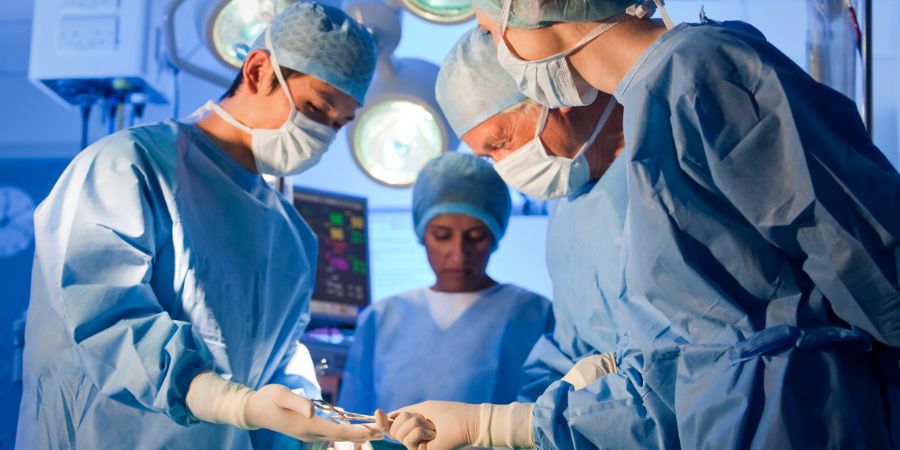
To save the testicle, emergency surgery to untwist it must be performed right away. The testicle is safely repositioned after being untwisted. If the torsion has caused too much harm, the testicle may need to be removed.
It’s possible that securing the other testicle will be essential to prevent it from twisting. Though some urologists can untwist a twisted testicle with a bedside procedure, surgical intervention is the final option.
What Happens If You Need A Testicle Removed?
If the torsion is severe enough, blood flow is cut off, and testicular tissue dies, the testicle must be surgically removed (orchiectomy).
Fortunately, only one testicle is adequate to perform testicular activities like hormone production (testosterone) and aiding in conception through spermatogenesis.
Therefore, these capabilities persist even after the torsion-related loss of a testicle. However, in highly unusual circumstances, testicular torsion can raise the probability of infertility.
Loss of a testicle is not something to be embarrassed about, but it can be emotionally taxing on some males. Also, the guy loses the regular appearance of his scrotum. So in the future, if they want a more attractive appearance, testicular implants are available and can be medically put.
Who Might Be At Risk For Testicular Torsion?
Age: Although it can affect younger children, it most frequently affects teenage guys right after puberty. As one advance in age, the incidence drops dramatically. Once you reach the age of 25, it is rare.
Family history: The risk of torsion increases if you have a first-degree relative who has suffered from the condition (but this is not always certain).
Instance: Torsion can happen at any time (even during sleeping). Torsions might be the result of an accident in sports. If you play a high-impact sport, it’s a good idea to wear a cup to protect your testicles from possible torsion or other injuries.
Epididymitis
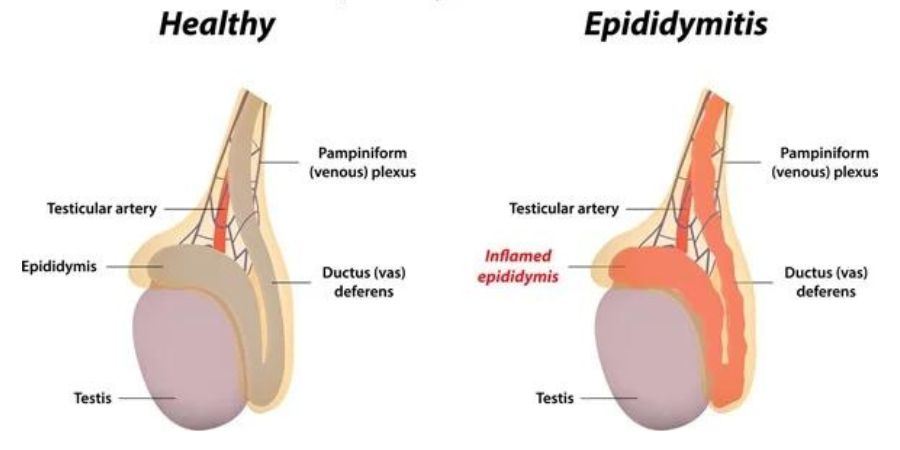
Epididymitis and orchitis are illnesses of the testicles and epididymis (sperm-transporting tubes that run from the testes to the vas deferens) caused by bacteria and viruses.
Teens who engage in sexual activity are at risk of contracting sexually transmitted infections, including chlamydia and gonorrhea.
Infection of the testicles by the mumps virus is more prevalent in children younger than 10 years of age.
What Is Epididymitis?
Epididymitis is inflammation of the epididymis and can be brought on by infection or trauma; it primarily affects sexually active teens. But epididymitis can be brought on by injury or a genitourinary abnormality in a teen who is not sexually active.
Epididymitis is not frequent before puberty, and when it does occur, it’s usually tied to some underlying genitourinary anomaly.
Epididymitis is typically brought on by Chlamydia trachomatis or Neisseria gonorrhea in men under 35. Men who practice anal sex are at increased risk for contracting Escherichia coli (a causative agent).
Symptoms Of Epididymitis
A sexually active young man may experience subacute pain in the scrotum, inguinal region, or abdomen. Despite having a history of dysuria or urethral discharge, some individuals may not report experiencing any discomfort.
The usual patient exhibits unilateral testicular pain and tenderness on physical examination. An early-stage symptom is a painful, swollen, and thickened epididymis. A delayed reaction, such as a swollen scrotum, testis, and spermatic cord, or a hydrocele, might make a diagnosis difficult.
Inflammation and swelling of the scrotum’s skin. Fever is more familiar with epididymitis than torsion, but only in some patients. Both dysuria and a urethral discharge suggest the diagnosis, although their absence is not diagnostic in and of itself.
The infected testis lies at a lower level than the unaffected testis. In some cases, raising the testicle can help alleviate discomfort. Most people have the cremasteric reflex.
Treatment
Epididymitis typically improves without treatment. The inflammation and soreness can be alleviated with rest and ibuprofen. If the urine is infected, antibiotics may be necessary to treat an episode of epididymitis caused by bacteria. Your doctor can advise you on the best course of action.
Urologic consultation and evaluation to rule out testicular torsion are required immediately – if the enlarged epididymis cannot be easily differentiated or if reactive edema and inflammation make the examination difficult.
Other Causes Of Testicular Pain
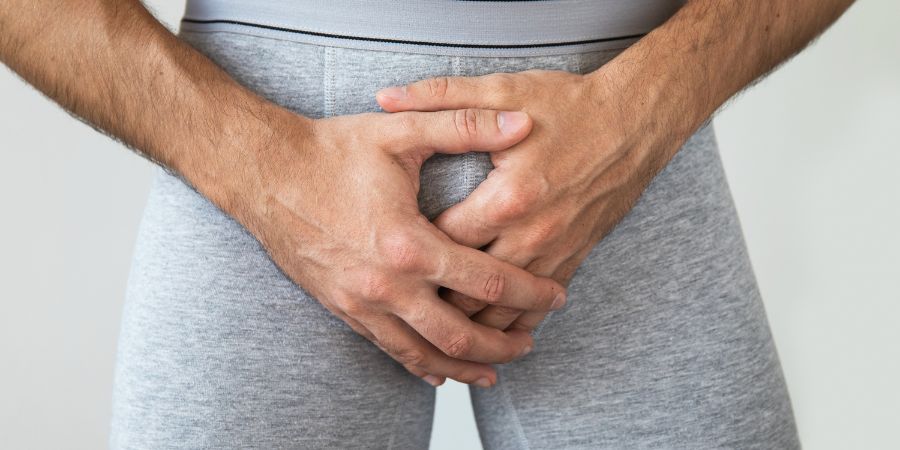
Testicular Trauma
Bruising, discomfort, and swelling are all possible results of trauma to the testicles. It is also possible for a testicle to burst or for a hematocele to form. (A condition known as hematocele develops when blood collects around the testicles and pressures them.)
A person should immediately consult a doctor if an injury to the testicles has caused pain and swelling.
Hydroceles/ Spermatocele/ Varicocele
Fluid builds up around the testicles (hydroceles), a vein gets bigger (varicocele), or fluid-filled cysts form (spermatoceles). This could affect and hurt your scrotum.
Men of any age are susceptible. Although they often don’t hurt, the swelling they generate can be uncomfortable. Hydrocele usually heals on its own in newborns. Surgery may be required for adults.
Kidney Stones
The discomfort in the testicles may originate from kidney stones. It’s called ‘referred pain’ – when pain spreads outside the region where the issue occurs, doctors refer to it as referred pain.
Additional signs that doctors may attribute to kidney stones are:
- Pee with a bloody tint.
- The stinging sensation of a burning urethra.
- Nausea.
- Vomiting.
- Discomfort in the region of the penis’s head.
- Sudden, severe pain in urinating that may originate in the groin or travel up the back.
Sometimes doctors recommend waiting for kidney stones to clear on their own. However, medical attention should be sought immediately if an infection develops with symptoms like a fever or discharge.
Hernias
When abdominal muscle tissue is too weak, a hernia develops. One type of hernia, the inguinal hernia, can push into the scrotum.
When abdominal fat or intestines push through the groin’s muscle, the result is called an inguinal hernia. Pain and swelling in the groin or scrotum may result.
A doctor can reduce an inguinal hernia by pushing it back into place. Surgery is typically required to treat a hernia (hernia repair).
Testicular Tumor
Pain and swelling around the testicles may be symptoms of a testicular tumor. Possible further signs include:
- There was a dull pain in my groin.
- A hard spot on the testicle.
- Occurrence of swollen testicles.
Testicular tumor symptoms can be similar to male-specific illnesses such as inguinal hernias and epididymitis. A medical professional must examine the patient to determine whether or not a tumor is present.
Infection Of The Urinary Tract
The urethra, bladder, and kidneys are all parts of the urinary system, where bacteria can enter to cause infection. Testicular pain is one sign that the disease may be present in the urinary tract.
Sometimes an infection will go away on its own, but antibiotics may occasionally be required.
FAQs
How can you prevent pain in the testicle?
While it may not be possible to completely eliminate the possibility of testicular pain, some measures can be taken to lessen its prevalence and severity. In particular, these are the steps you can take:
- Using a testicle supporter while participating in athletics.
- Using a condom and other methods of safe sex during sexual activity.
- Checking for lumps or changes in your testicles once a month.
- Completely emptying your bladder when you urinate.
Do testicular torsion cases ever resolve on their own?
Very rarely, a teen boy’s testicles, once twisted, untwist on their own. If the adolescent has intermittent torsion, the discomfort comes on quickly and then subsides. But in most cases, the testicles may not improve and may sustain permanent injury. Therefore, if your adolescent is experiencing testicular pain, it is crucial to seek medical assistance.
What is the responsibility of parents regarding testicular pain in teenagers?
Some parents might feel uncomfortable discussing genital anatomy and reproductive health with teenagers and preteens. However, you can educate them that genital pain can be an emergency and that they shouldn’t keep it a secret from you.
You can reassure them that it’s normal and nothing to be ashamed of; it’s just a part of growing up. To prevent irreversible injury or loss of testicles, prompt treatment is essential; therefore, tell them to tell you if they experience any testicular pain.
Read also: Testicular Injury – Causes, Symptoms, And Treatments.
Wrapping Up

When a young man experiences discomfort or swelling in his privates, he may consult a pediatrician for help.
Teenage genital illness can manifest in various ways. It is up to the pediatrician to recognize the signs of a true surgical emergency and those of a frequent variant or easily managed problem.
Medical attention should be sought if one or both testicles are swollen or painful. Seek prompt medical assistance if the discomfort is triggering nausea and vomiting.
The quicker a person with testicular torsion receives medical assistance, the better their chances of having blood flow restored. Most cases of testicular pain can be resolved medically.

